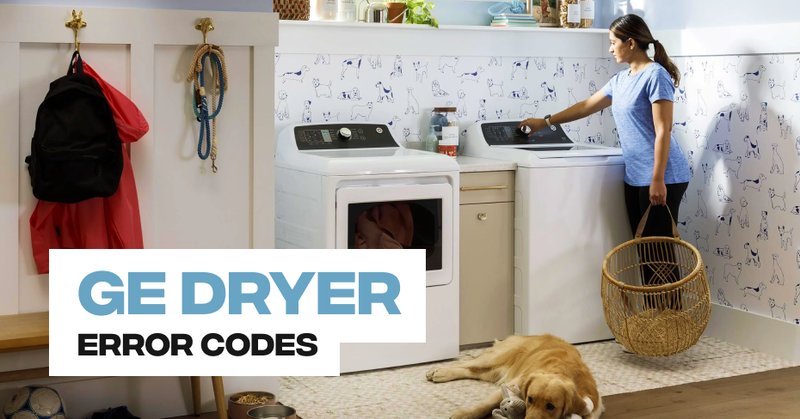
So, what does it really mean when you see that SE error code? In simple terms, it’s your dryer’s way of waving a little red flag to get your attention. Think of it like the check engine light in your car—it’s trying to tell you there’s something amiss that needs fixing. In the case of the SE error, it usually relates to a sensor error. Sensors in your dryer perform crucial tasks like monitoring moisture levels and temperature to ensure your clothes come out perfectly dry. When these sensors act up, the dryer can’t do its job efficiently.
Understanding the SE Error Code on GE Dryers
The SE error code in GE dryers indicates a sensor error, specifically related to the moisture sensors. These sensors are essential because they help the dryer determine how long to run each cycle. Imagine if you had a stopwatch that suddenly stopped working—how would you know when to stop timing? Similarly, when the moisture sensor fails, your dryer doesn’t know when your clothes are truly dry.
The malfunction could be due to a dirty sensor, a loose connection, or even a faulty part. It’s kind of like a clogged faucet that slows to a drip—annoying and ineffective. For most people, the knee-jerk reaction might be to keep resetting the dryer to see if it resolves itself. While restarting might work temporarily, it rarely fixes the underlying issue. If you ignore the problem, you risk your dryer running too long or not enough, which either wastes energy or leaves you with soggy clothes.
Before you go thinking your dryer is out to get you, remember that these kinds of errors are not uncommon. Dryers, like all machines, have mechanical and electrical components that can wear out over time. It’s perfectly normal for them to need a bit of TLC every now and then. But knowing when to DIY and when to call in the pros is key.
When Should You Call a Technician?
You might be wondering, “Can’t I just clean the sensors myself?” In short, yes, you can attempt basic troubleshooting. If you’re comfortable, you can gently clean the sensors using a mild detergent and a soft cloth. This process can sometimes clear up any residue that’s causing the sensor to malfunction—similar to wiping smudges off your glasses for a clearer view.
However, if you’ve tried cleaning and resetting the dryer with no success, it’s time to consider calling in a professional technician. Why? Because they have the expertise and the right tools to diagnose and fix deeper issues that you might not be able to see. Think of it like taking your car to a mechanic for a mysterious noise you can’t pinpoint. They’ll have the experience to locate and repair the glitch effectively.
Moreover, a technician can ensure that no other components are affected and help prevent future problems. After all, addressing the root of the problem not only gets your dryer back up and running but also extends its lifespan. It’s a worthy investment for peace of mind and a pile of fresh, dry laundry.
Preventing Future Sensor Errors
While calling a technician is sometimes necessary, keeping an eye on regular maintenance can often prevent these issues in the first place. Much like regular oil changes keep your car engine purring smoothly, simple dryer maintenance can stave off sensor errors.
First, make it a point to clean the lint trap after every load. This might sound trivial, but a clear lint trap helps maintain steady airflow, which keeps the dryer from overheating and inadvertently affecting the sensors. Secondly, try to avoid overloading your dryer. Give your clothes room to tumble freely, which not only helps them dry faster but also prevents unnecessary wear on the sensors.
Lastly, consider scheduling a yearly maintenance check with a professional. They can provide a thorough cleaning and inspection, catching any potential issues early on. Remember, a little care goes a long way with home appliances, and regular maintenance checks can save you from the hassle of dealing with unexpected breakdowns.
So there you have it—a handy guide on when to call a technician for your GE dryer’s SE error code. The next time you see that cryptic message, you’ll be well-prepared to tackle the issue, whether by a quick DIY clean or by enlisting the help of a professional. Either way, you’re only one step away from getting that fresh laundry scent back in your home.